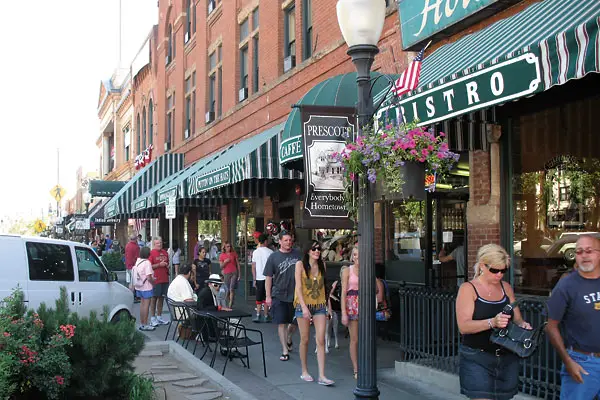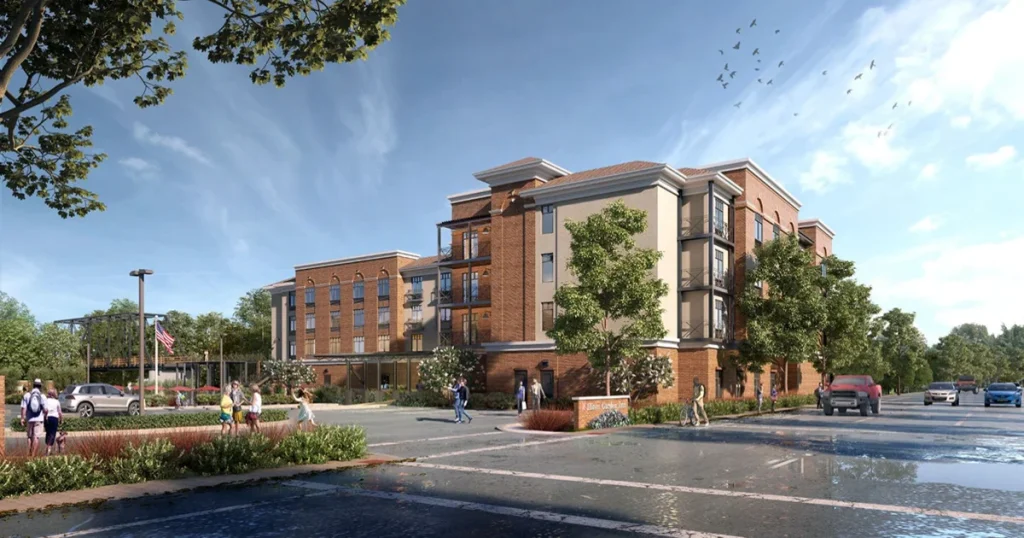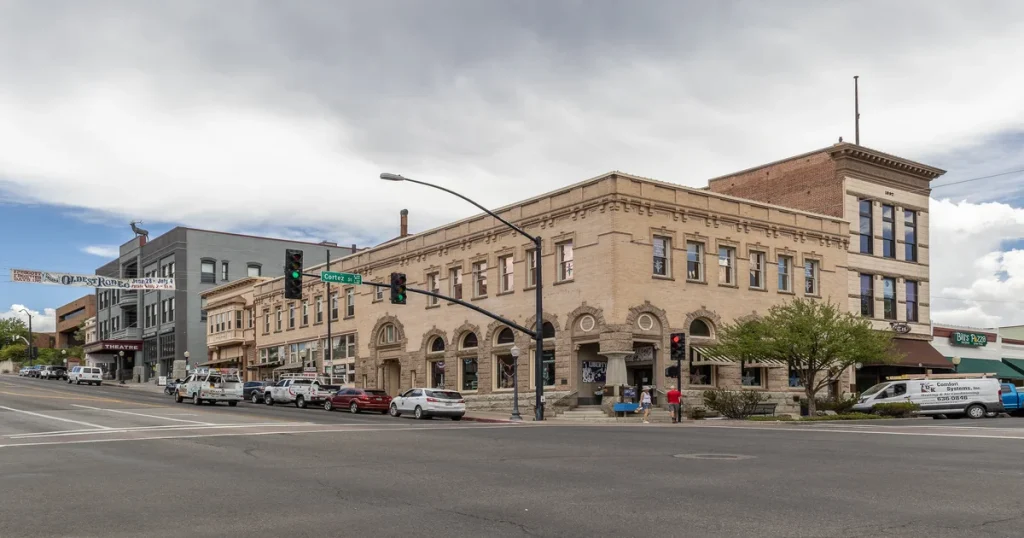Preservation of public spaces in downtown Prescott is more than just a cultural endeavor; it’s an urgent, collective mission to sustain the heart of the city. These public spaces stand as silent witnesses to the passage of time, echoing the laughter and whispers of generations gone by.

Beyond their aesthetic allure, they are essential hubs where community ties are woven, and cultural identity is shaped. In a world ever-evolving, preserving these public spaces is pivotal to retaining the character and heritage of downtown Prescott.
Historical Context of Public Spaces in Downtown Prescott
The public spaces of downtown Prescott hold invaluable historical significance, being integral parts of the town since its inception. They have seen the community grow, develop, and transform, serving as the backdrop for numerous significant events and daily life alike.
Prescott’s public spaces are unique, each narrating its tale of times gone by. The thoroughfares and parks, plazas, and open spaces are living, breathing testimonies to the city’s evolution. They have experienced shifts in their roles and functionalities, adapting to the changing needs and preferences of the local populace.
The contribution of these spaces to community development is immeasurable. They’ve been the setting for communal gatherings, public discourse, and cultural exchange, playing a pivotal role in shaping the social fabric of the city. Their preservation, hence, is not just about maintaining aesthetic landmarks but about conserving the soul of the community.
Historical preservation enhances community resilience, fostering a sense of belonging and pride among the inhabitants. It allows the current generation to walk the paths their ancestors once tread, maintaining a tangible link to their roots.
Current State of Public Spaces in Downtown Prescott
Understanding the current state of public spaces requires a meticulous inventory of existing landmarks and an assessment of their conditions. Downtown Prescott is adorned with a myriad of spaces, each with its unique architectural and historical value.

Preservation efforts are underway, albeit facing numerous challenges. Multiple stakeholders, including government bodies, local communities, and private entities, are contributing towards maintaining the historical integrity of these spaces. However, to what extent these initiatives are successful, requires a discerning evaluation.
The opinions and sentiments of the local populace are crucial indicators of the prevailing attitudes toward the state of public spaces. A harmonious public space is reflective of community values and aspirations, and thus, gauging public sentiment is paramount in prioritizing preservation endeavors.
Benefits of Preserving Public Spaces
Preserving public spaces in downtown Prescott renders multifaceted benefits. It contributes to environmental sustainability by maintaining green spaces and promoting biodiversity. These spaces serve as the lungs of the city, purifying the air and providing a haven for local flora and fauna.
In terms of social and community benefits, public spaces are indispensable. They foster social interaction, community bonding, and mutual understanding, reducing isolation and promoting social cohesion. They act as communal living rooms where people from all walks of life can mingle, relax, and create shared memories.
Challenges to Preservation
Preservation of public spaces faces numerous challenges, one being the relentless urbanization and developmental pressures that threaten the existence of these timeless spaces. Balancing modernization with preservation is a delicate act, requiring meticulous planning and concerted efforts from all stakeholders.
Financial constraints are another significant impediment, with many preservation projects requiring substantial investments. Allocating funds for preservation amidst myriad other developmental needs often put these projects on the back burner, compromising the integrity of these historic spaces.
Legal and regulatory challenges also pose significant hurdles. Navigating through complex legal frameworks and obtaining necessary permissions can be daunting and time-consuming. This often results in delays and, in some cases, abandonment of preservation projects.
Addressing these challenges necessitates a collective effort from government agencies, local communities, and private entities. Through collaboration and innovative solutions, the essence of Prescott’s public spaces can be conserved for future generations.
Strategies for Effective Preservation
Effective preservation strategies revolve around active community engagement and public participation. Involving local communities in preservation initiatives ensures the incorporation of local values, needs, and aspirations in developmental plans, fostering a sense of ownership and responsibility among the populace.
Legal protections and enlightened policy formulations are crucial for safeguarding public spaces from unchecked development and degradation. Robust legal frameworks can provide the necessary shield against potential encroachments and unwarranted alterations, maintaining the sanctity of these spaces.
The path to preservation also lies in sustainable development and responsible urban planning. By adopting eco-friendly practices and innovative design principles, the environmental impact of developmental projects can be minimized, ensuring the longevity and health of public spaces.
Financial stability is another cornerstone for effective preservation. Innovative fundraising initiatives and financial models, such as public-private partnerships, can ensure the availability of necessary funds, facilitating the smooth execution of preservation projects.
Case Studies: Success Stories of Public Space Preservation
Exploring success stories provides insightful lessons and inspiring templates for preservation. One such example is the revitalization of a historic park which, through community participation and public-private partnerships, was transformed into a vibrant communal space, blending historical elements with modern amenities.
Another noteworthy instance is the rejuvenation of a public square. This project showcased the perfect amalgamation of innovative design, community engagement, and sustainable practices, preserving the historical essence while catering to contemporary needs.

In a similar vein, a community-led conservation initiative illustrated the power of collective efforts in preserving public spaces. The initiative united diverse stakeholders in a common pursuit, overcoming challenges and setting a precedent for community-driven conservation endeavors.
Recommendations and Future Directions
Strengthening policy frameworks is indispensable for the preservation of public spaces in downtown Prescott. Enhanced legal provisions and stringent enforcement can ensure the protection and conservation of these cherished landmarks, enabling them to continue narrating the tales of Prescott’s illustrious past.
Enhancing community awareness and participation is vital. Engaged and informed citizens can act as custodians of their heritage, safeguarding it against neglect and deterioration. Community-driven initiatives can bring about transformative changes, ensuring the survival and flourishing of public spaces.
Balancing development with preservation is the key to a harmonious and vibrant urban landscape. Thoughtful planning and responsible development can enable the coexistence of history and modernity, creating spaces that resonate with the past while embracing the future.
FAQs: Preservation of public spaces in downtown Prescott
Are there any success stories of public space preservation in other cities that Prescott can learn from?
Yes, numerous global examples like New York City’s High Line and Seoul’s Cheonggyecheon Stream exemplify successful preservation, showcasing the integration of innovative design, community engagement, and sustainability in revitalizing public spaces.
How does preserving public spaces contribute to the economic vitality of downtown Prescott?
Preservation enhances economic vitality by attracting tourists, increasing property values, fostering local entrepreneurship, and generating revenue through events and activities, benefiting local businesses and the community at large.
What are the potential challenges and conflicts in preserving public spaces, and how can they be mitigated?
Challenges include financial constraints, legal hurdles, and stakeholder conflicts. Mitigation strategies encompass innovative funding, streamlined legal processes, collaborative decision-making, and inclusive planning, aligning preservation efforts with communal values and aspirations.
Conclusion
Preservation of public spaces in downtown Prescott is not merely an aesthetic or cultural pursuit; it is a journey towards sustaining the city’s soul and essence.
The harmonious interweaving of the past and present in these spaces creates a unique tapestry, reflecting the city’s diverse heritage and evolving identity.
By fostering a collaborative, informed, and proactive approach, the legacy of Prescott’s public spaces can be preserved, enriching the lives of present and future generations alike. Let’s continue to value and protect these treasures, ensuring that the whispers of yesteryears continue to echo in the corridors of time.



Leave a Comment
You must be logged in to post a comment.